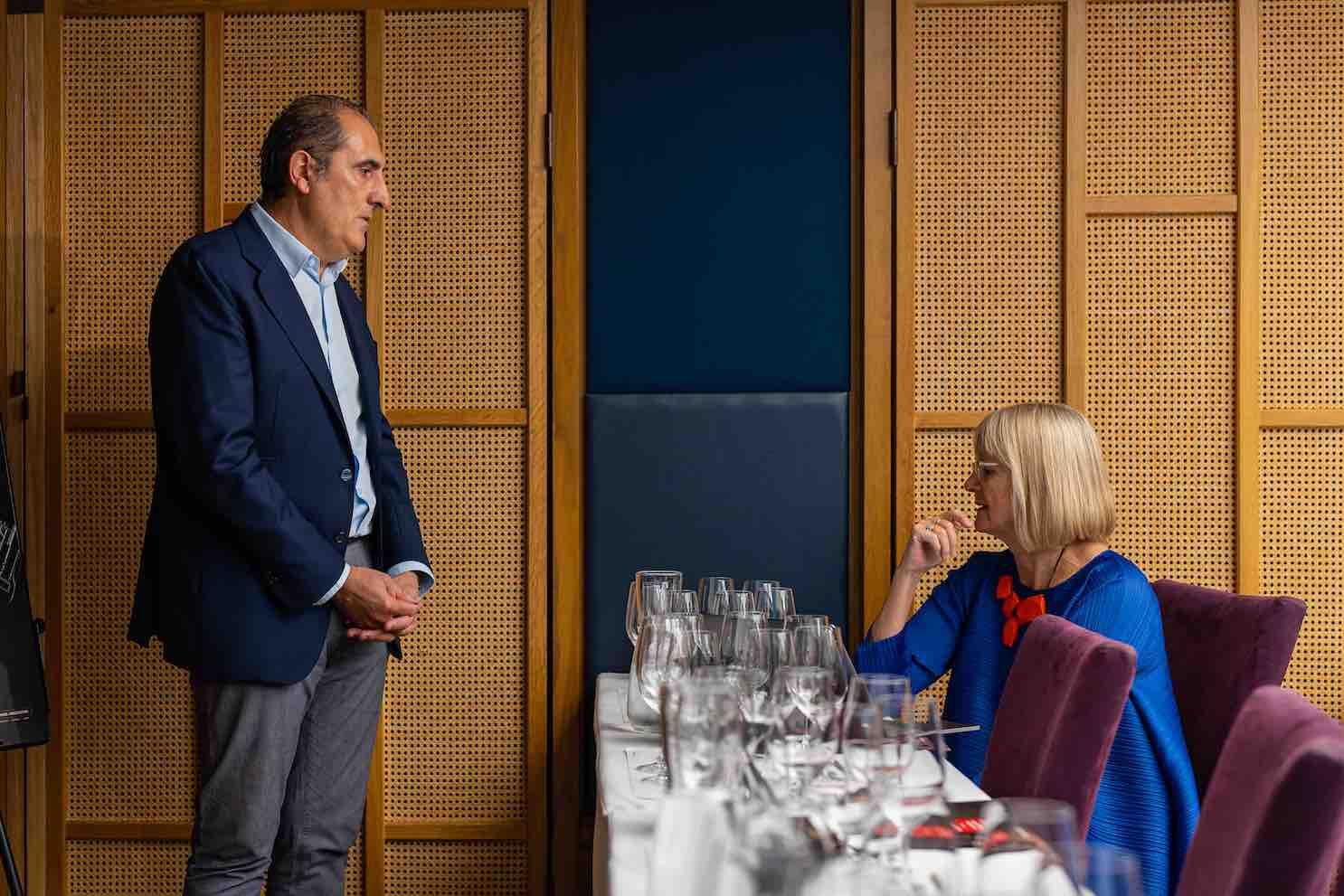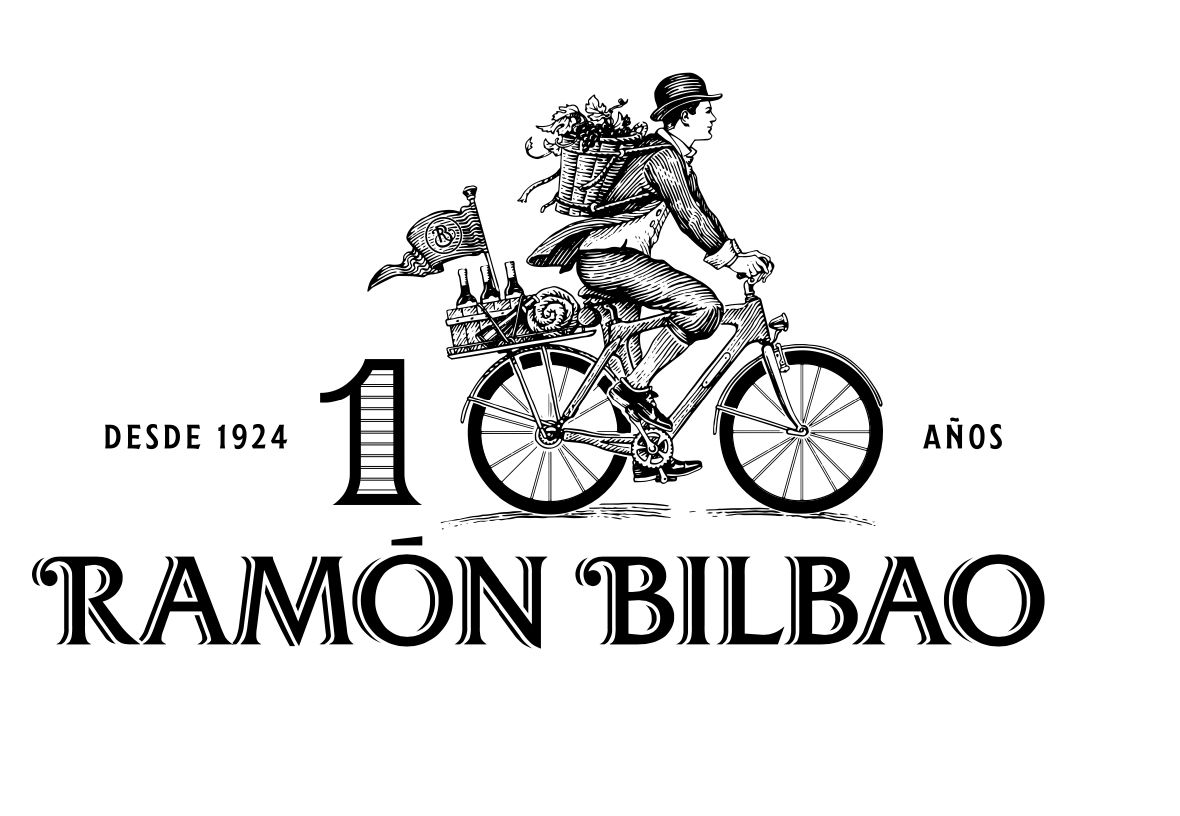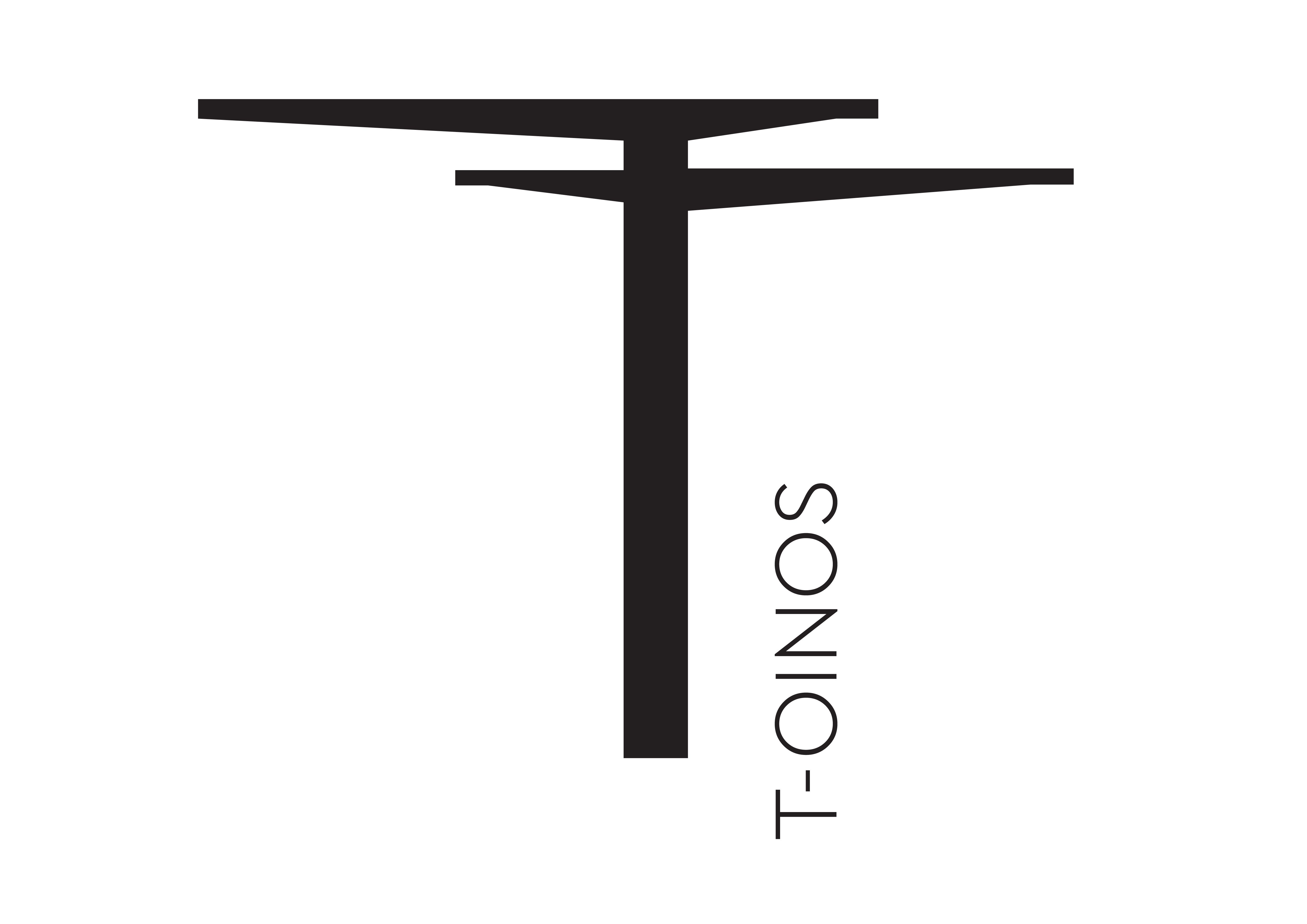“I learnt a lot and the Spanish Wine Academy will be pleased to know that I love Garnacha a little more than when my day started. I learnt too that my brain is easily tricked; I’m not so much in love with that idea, but I know I’m not alone!” writes McCleery.
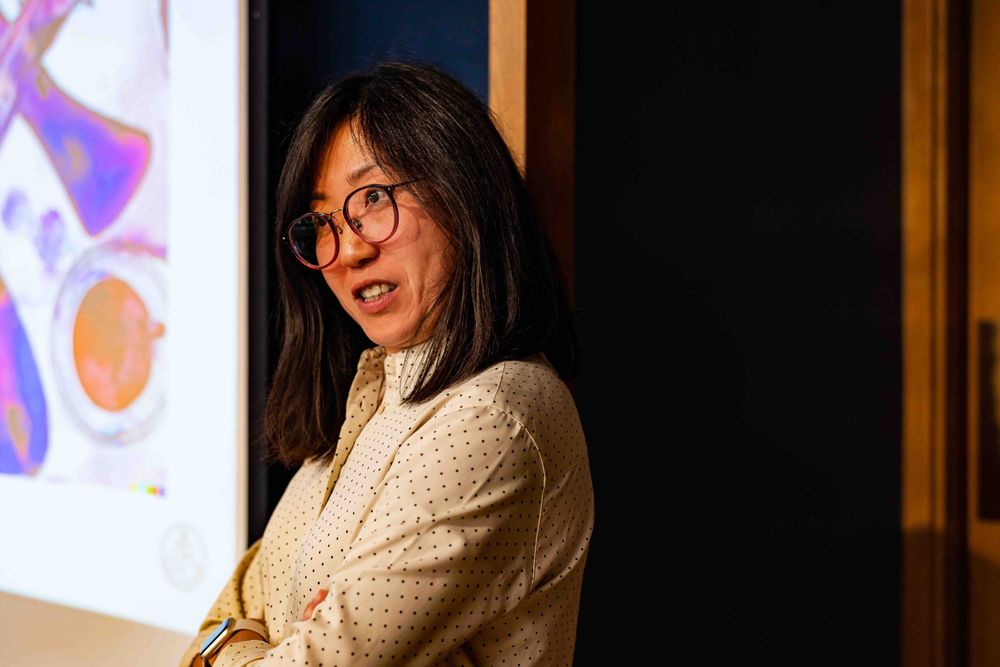
Dr. Qian Janice Wang: do multisensory metaphors aid our wine memory?
The mantra that spurred one of Spain’s most dynamic wine companies, Ramón Bilbao, to set up the Spanish Wine Academy is “The more you learn about something, the more you love it.” So they’ve teamed up with some of the world’s leading wine professionals to spread the word about Spanish wines and improve everyone’s knowledge – be they connoisseur or wine beginner.
The Spanish Wine Academy was in London town in October, to give two very different masterclasses: “Spanish Garnacha” and “Neuroscience of Wine Service”.
I came away substantially better educated on both topics and inspired too. This thanks, in no small part to the excellent speakers.
Discovering more about Garnacha
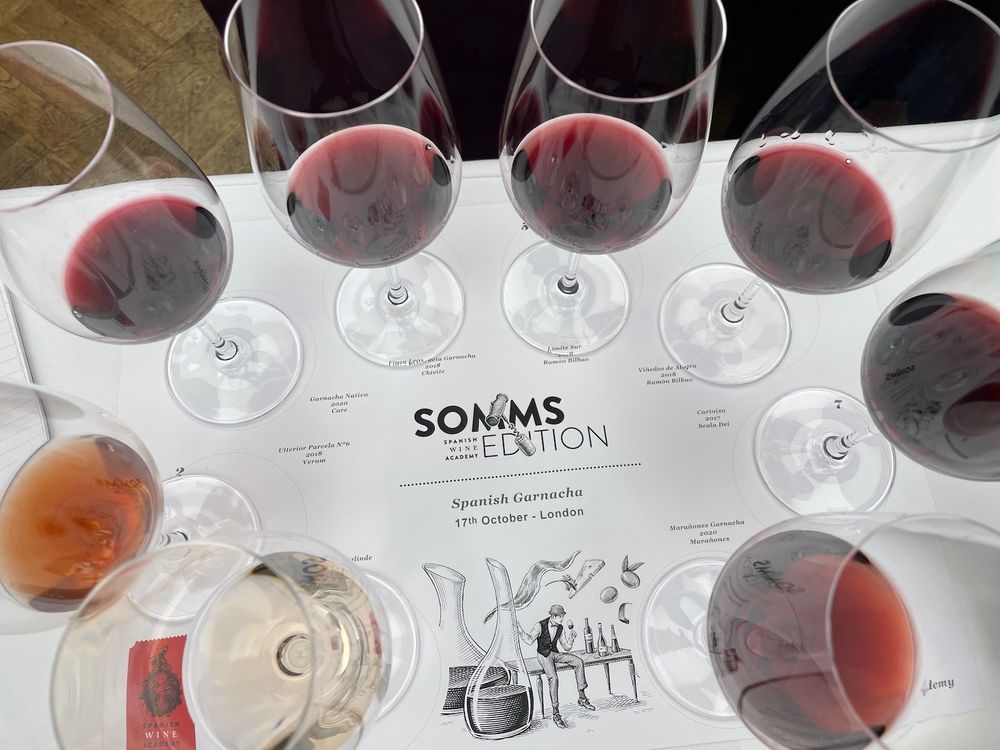
‘Spanish Garnacha’ was led by Ramón Bilbao’s winemaker, Rodolfo Bastida and aided by Agustín Trapero, wine director at the Four Seasons in Madrid and the infectiously enthusiastic Peter Wallbridge. Wallbridge heads up the buying team at Enotria&Coe and was previously a winemaker in Spain.
The masterclass taught me several things I didn’t know about Garnacha. Some of the highlights:
Garnacha has drought-resistant credentials that make it a strong player in the ongoing adaptation to climate change. Wallbridge explained that the variety is known to some as “the intelligent grape” because it is isohydric. The plant has the ability to rapidly close its stomata, which means it doesn’t perspire and can hold water. That’s smart.
Garnacha is grown most widely in France, Spain, and Italy – in that order. What was more of a surprise, is that China holds fourth spot.
Wallbridge quoted Ron Jackson’s, Wine Science: Principles and Applications, which includes some research that took place in the South of France, measuring the phenolic content in different varieties. Whilst the data clearly showed that Pinot Noir had considerably less anthocyanin (colour) than the other varieties analysed, Grenache was shown to have half the tannin phenolics of Pinot Noir. Fascinating!
There followed an eight-wine line up of Garnacha wines, showing the variety in various styles and guises.
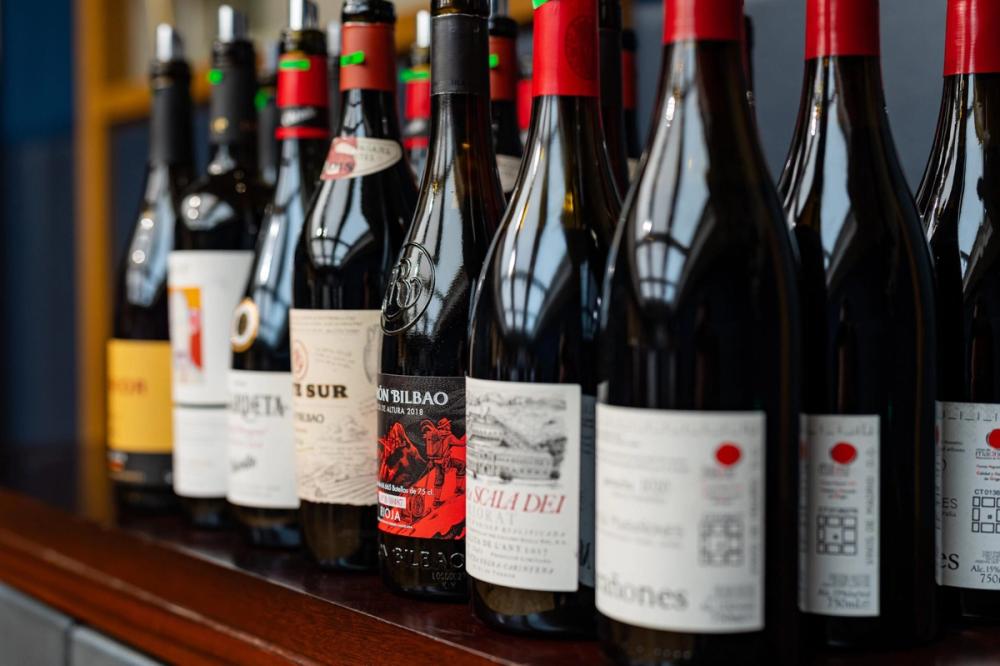
That love affair with Garnacha
I use the word guise intentionally. Verum’s 2018 Ulterior Parcela No. 6 is from Castilla La Mancha and is as pale a ‘red’ Garnacha wine as I’ve ever seen.
Wallbridge calls the region, “the frying pan of Spain”, before describing the work Verum is doing to ensure that winemaking in the area doesn’t just survive, but flourishes. High-density plantings on shallow, rocky limestone soils with a compressed stone stratum, make the viticulture a challenge. But a worthwhile one. 50% whole cluster fermentation allows the stems to draw colour from the juice, which partially accounts for the “least red wine looking red wine” we have ever seen. Fermented in stainless steel, Ulterior Parcela No. 6 is aged for eleven months in big, ancient amphora.
Unfiltered and un-fined, there’s a definite savoury quality to this stylish wine. It’s very slick and smooth, with classic Garnacha plushness but with welcome freshness that sneaks up on you on the finish. RRP £22.00.
At the other end of the colour spectrum was the DO Priorat 2017 Cartoixa from Scala Dei. Initially quite muted, it opened up into a graphitic, black-fruited beauty with tobacco and spice. Such terrific energy and carrying its depth and complexity with impressive ease. RRP £50.
The appliance of Neuroscience
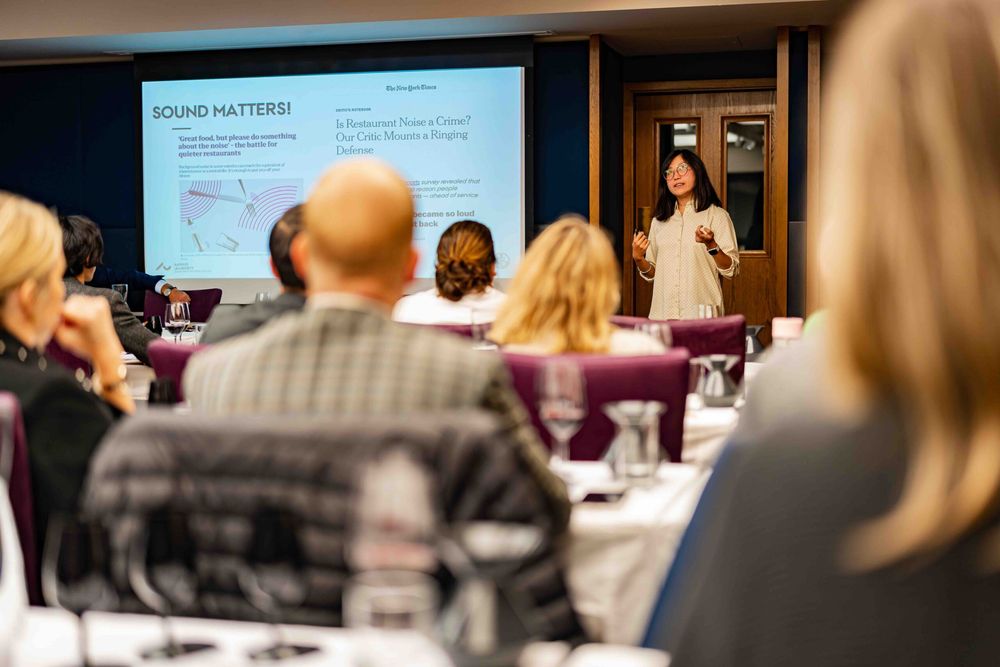
Dr. Qian Janice Wang: challenging perceptions
Then a little breather before Dr. Qian Janice Wang led us into the magical world that is the ‘Neuroscience of Wine Service’.
This is clearly a complex topic and Wang’s credentials as an academic and wine taster are impressive. We begin with a blind tasting of three wines. Served in opaque wine glasses, we get a questionnaire to complete too.
Some questions are decidedly unusual, “is the wine angular or round?”, “can we please draw the shape of the wine we are tasting”, “if this wine were an instrument, what would it be”. We are, of course, being asked to use all of our senses – both real and imagined. This is part of Wang’s latest research looking at whether multisensory wine metaphors, with colours and shapes, will aid our wine memory.
Once the wines are revealed, I note that I’ve described Ramón Bilbao’s Edición Limitada 2018 as a rectangular harp, d’Arenberg’s 2019 The High Trellis Cabernet Sauvignon as a square viola and Gilles Robin’s 2019 Albéric Crozes-Hermitage as a loaf-shaped bassoon … Ahem. I confess, this needs expert interpretation. Sadly, I am not a neuroscientist.

One of the questionnaires in full
From the wine service perspective, there were some fascinating take-aways.
We tasted two wines, with two different pieces of music. Without exception, our tasting notes for each wine differed. Even though I suspect the majority of us knew we were tasting the same wine. The higher pitch led to notes that picked out brighter fruit flavours, whereas the lower pitched piece seemed to draw out the oak and the wine’s richness.
Does sound matter? Yes, it does. Wang explains that there’s research to show that ‘white noise’ reduces sensitivity to sweetness and, arguably more importantly, increase the speed and the amount that people eat.
Music can also influence buying power, with classical and jazz music having been shown to encourage greater spend, in comparison to pop music. However, this all needs to be qualified by understanding what kind of establishment you are.
And then there’s the tactile senses. When tasters were asked to stroke a velvety surface whilst sampling, their reflections on the wines were altogether more pleasant than when they were given a piece of sandpaper.
What about the weight of the wine glasses and the cutlery we have in our hand?
This is an interesting one. When the research focuses on food, heavy cutlery directs people to having a positive reaction to what they’re eating, and the qualitive judgements they make. The research is yet to be done, but would it be the same for wine glasses? The pros might hanker for light crystal glassware, but perhaps the amateur enthusiast would lean to something with a greater presence between their fingers? Research and time will tell.
It’s a fascinating subject, and there are important considerations for both the on and off-trade. The music you play, the ambient temperature, the crockery and cutlery you choose… they all influence how and what we taste.
I rather wished the team at The Spanish Wine Academy had allowed the time to explore the optimal music for Spanish Garnacha… it would only have added to the fun.
I learnt a lot and the Spanish Wine Academy will be pleased to know that I love Garnacha a little more than when my day started. I learnt too that my brain is easily tricked; I’m not so much in love with that idea, but I know I’m not alone!
